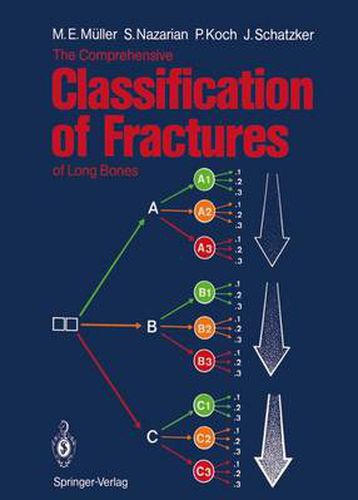Readings Newsletter
Become a Readings Member to make your shopping experience even easier.
Sign in or sign up for free!
You’re not far away from qualifying for FREE standard shipping within Australia
You’ve qualified for FREE standard shipping within Australia
The cart is loading…






This reference work presents a classification of fractures of all long bones. The fundamental principle of this classification is the division of all fractures of a bone segment into three types and the further subdivision into three groups and their subgroups. The groups are arranged in an ascending order of severity according to the morphologic complexities of the fractures, the difficulties inherent in their treatment and the prognosis. Thus, once a surgeon classifies a fracture, he will have determined its severity and he will have a guide to its best possible treatment. The diagnosis of a fracture is expressed by combining the numerical code of its location with the alphanumeric code of its morphological characteristics. This alphanumeric code has been designed to facilitate computer storage and retrieval. This system of classification is based on the AO classification in use since 1979 and on over 150,000 documented cases on file in the AO Documentation Center, Berne, Switzerland.
$9.00 standard shipping within Australia
FREE standard shipping within Australia for orders over $100.00
Express & International shipping calculated at checkout
This reference work presents a classification of fractures of all long bones. The fundamental principle of this classification is the division of all fractures of a bone segment into three types and the further subdivision into three groups and their subgroups. The groups are arranged in an ascending order of severity according to the morphologic complexities of the fractures, the difficulties inherent in their treatment and the prognosis. Thus, once a surgeon classifies a fracture, he will have determined its severity and he will have a guide to its best possible treatment. The diagnosis of a fracture is expressed by combining the numerical code of its location with the alphanumeric code of its morphological characteristics. This alphanumeric code has been designed to facilitate computer storage and retrieval. This system of classification is based on the AO classification in use since 1979 and on over 150,000 documented cases on file in the AO Documentation Center, Berne, Switzerland.